 In the exhibition the sun does not rise in the north, de Miranda proposes one-person tales navigating between fictional and non-fictional narratives in the affective space of the border. The exhibition investigates the landscapes that witness hope, from the journeys of migration between Africa and Europe, set within a duality of existence and citizenship: one contemplating Europe and the other a return to Africa.
In the exhibition the sun does not rise in the north, de Miranda proposes one-person tales navigating between fictional and non-fictional narratives in the affective space of the border. The exhibition investigates the landscapes that witness hope, from the journeys of migration between Africa and Europe, set within a duality of existence and citizenship: one contemplating Europe and the other a return to Africa.
I'll visit
26.04.2023 | by Cindy Sissokho
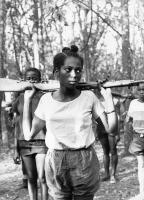 No history of decolonization or of decolonizing praxes is ever completed without attention to gender. How did women view the liberation struggles in the former Portuguese colonies? How were their ways of seeing integrated or not in the imagination of colonialism? Was there a specific gaze to women over the liberation struggles? What knowledge and awareness do we have of/about these ways of seeing? And how do these ways of seeing intersect with those of contemporary filmmakers, artists, curators and academics who are now questioning public and private archives, are visually recreating their memories or re-imagining colonialism? What role academic research, archive conservation policies, programming and curatorship have in questioning or prolonging (official) “politics of memory”?
No history of decolonization or of decolonizing praxes is ever completed without attention to gender. How did women view the liberation struggles in the former Portuguese colonies? How were their ways of seeing integrated or not in the imagination of colonialism? Was there a specific gaze to women over the liberation struggles? What knowledge and awareness do we have of/about these ways of seeing? And how do these ways of seeing intersect with those of contemporary filmmakers, artists, curators and academics who are now questioning public and private archives, are visually recreating their memories or re-imagining colonialism? What role academic research, archive conservation policies, programming and curatorship have in questioning or prolonging (official) “politics of memory”?
Afroscreen
22.05.2021 | by Ana Cristina Pereira (AKA Kitty Furtado), Inês Beleza Barreiros and Maria do Carmo Piçarra
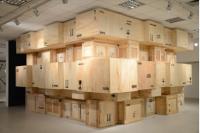 This essay investigates the ways in which contemporary artistic practices have been working towards an epistemic and ethico-political decolonization of the present by means of critical examinations of several sorts of colonial archives, whether public or private, familial or anonymous. Through the lens of specific artworks by the artists Ângela Ferreira, Kiluanji Kia Henda, Délio Jasse, Daniel Barroca and Raquel Schefer, this essay examines the extent to which the aesthetics of these video, photographic and sculptural practices puts forth a politics and ethics of history and memory relevant to thinking critically about the colonial amnesias and imperial nostalgias which still pervade a post-colonial condition marked by neo-colonial patterns of globalization and by uneasy relationships with diasporic and migrant communities.
This essay investigates the ways in which contemporary artistic practices have been working towards an epistemic and ethico-political decolonization of the present by means of critical examinations of several sorts of colonial archives, whether public or private, familial or anonymous. Through the lens of specific artworks by the artists Ângela Ferreira, Kiluanji Kia Henda, Délio Jasse, Daniel Barroca and Raquel Schefer, this essay examines the extent to which the aesthetics of these video, photographic and sculptural practices puts forth a politics and ethics of history and memory relevant to thinking critically about the colonial amnesias and imperial nostalgias which still pervade a post-colonial condition marked by neo-colonial patterns of globalization and by uneasy relationships with diasporic and migrant communities.
Games Without Borders
06.12.2020 | by Ana Balona de Oliveira
 Yonamine has theatrically composed the gallery walls with posters made out of a selection of articles from Zimbabwean newspapers, paintings and video animations, showing several graphic references of power such as Napoleon figure and the Ku Kux Klan uniform presented in a navy blue adulterated version colour that evokes the uniforms of Zimbabwe's workers. All these elements are presented as political propaganda in the eve of an election, personifying the conqueror's evil thirst to reach power and control by keeping the opposition voiceless.
Yonamine has theatrically composed the gallery walls with posters made out of a selection of articles from Zimbabwean newspapers, paintings and video animations, showing several graphic references of power such as Napoleon figure and the Ku Kux Klan uniform presented in a navy blue adulterated version colour that evokes the uniforms of Zimbabwe's workers. All these elements are presented as political propaganda in the eve of an election, personifying the conqueror's evil thirst to reach power and control by keeping the opposition voiceless.
I'll visit
26.08.2019 | by Cécile Bourne-Farrell
 Miranda’s work is deeply marked by family memories and experiences and, more broadly, by the collective histories of Portugal and Angola. In Panorama, her focus on the psychic and physical remnants of several pasts – colonial, post-independence, post-Cold War, post-civil war – within natural, urban and architectural landscapes of Luanda and beyond serves the larger purpose of examining the contradictions of the present and imagining alternative futures.
Miranda’s work is deeply marked by family memories and experiences and, more broadly, by the collective histories of Portugal and Angola. In Panorama, her focus on the psychic and physical remnants of several pasts – colonial, post-independence, post-Cold War, post-civil war – within natural, urban and architectural landscapes of Luanda and beyond serves the larger purpose of examining the contradictions of the present and imagining alternative futures.
I'll visit
05.07.2017 | by Ana Balona de Oliveira
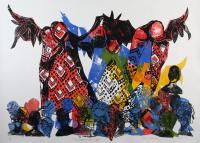 For other mediums such as sound art and video art to gain traction in Afrika, I think they need to be taken out of the gallery or museum environment and put into the mobile environment where people are. This entails modifying the model of collecting, where alternative commercial models better suited to mobile consumption of content come to the fore. The onus is on these new art platforms in Afrika to look deep within their cultures and societies and innovate the mediums themselves to make art more relevant for their communities.
For other mediums such as sound art and video art to gain traction in Afrika, I think they need to be taken out of the gallery or museum environment and put into the mobile environment where people are. This entails modifying the model of collecting, where alternative commercial models better suited to mobile consumption of content come to the fore. The onus is on these new art platforms in Afrika to look deep within their cultures and societies and innovate the mediums themselves to make art more relevant for their communities.
I'll visit
14.10.2015 | by Inês Valle
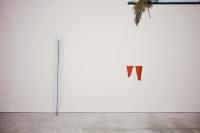 The current situation tells us in what way we should create empathy with the images of the world. Or how the images of the world are themselves empathy, understanding. An abstract economical system that obsessively copies the natural chaos.
Distribution, or relationship. The act of transaction and of eternal and permanent conflict.
The current situation tells us in what way we should create empathy with the images of the world. Or how the images of the world are themselves empathy, understanding. An abstract economical system that obsessively copies the natural chaos.
Distribution, or relationship. The act of transaction and of eternal and permanent conflict.
Mukanda
27.04.2015 | by Pedro Barateiro
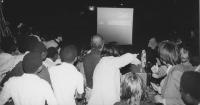 The solo exhibition ‘Monuments in Reverse’ gathers for the first time a set of works by Ângela Ferreira, made between 2008 and 2012, which emerged from the same research-based processes, giving rise, however, to disparate installations whose intimate relationships tend to remain unexplored from a curatorial perspective. With the aim of opening a space of visibility for the conceptual and formal interstices sustaining her practice in general and these works in particular, the exhibition is purposefully documentary and process-based. It intends to shed light on thinking processes more than points of arrival, through the possibility of new connections, or the visibility of previously occluded ones, the strong presence of drawing and video, and the dialogue with works by others which have constituted point of departure or inspiration.
The solo exhibition ‘Monuments in Reverse’ gathers for the first time a set of works by Ângela Ferreira, made between 2008 and 2012, which emerged from the same research-based processes, giving rise, however, to disparate installations whose intimate relationships tend to remain unexplored from a curatorial perspective. With the aim of opening a space of visibility for the conceptual and formal interstices sustaining her practice in general and these works in particular, the exhibition is purposefully documentary and process-based. It intends to shed light on thinking processes more than points of arrival, through the possibility of new connections, or the visibility of previously occluded ones, the strong presence of drawing and video, and the dialogue with works by others which have constituted point of departure or inspiration.
To read
07.01.2015 | by Ana Balona de Oliveira
 A City Called Mirage is a complex exhibition, by the Angolan artist KILUANJI KIA HENDA (Luanda, 1979), which explores original approaches to a recurring theme in recent times: that of cities between the states of virtuality and desertification. Kiluanji uses (science and mythological) fiction and irony as ways of transcending the pessimism of hyper-criticism and the aesthetics of the ruin. Through humour we are made aware of just how ephemeral the largest human constructions are: all cities will be reduced to raw materials again, just like the metals removed from the ground will once again merge back into it.
A City Called Mirage is a complex exhibition, by the Angolan artist KILUANJI KIA HENDA (Luanda, 1979), which explores original approaches to a recurring theme in recent times: that of cities between the states of virtuality and desertification. Kiluanji uses (science and mythological) fiction and irony as ways of transcending the pessimism of hyper-criticism and the aesthetics of the ruin. Through humour we are made aware of just how ephemeral the largest human constructions are: all cities will be reduced to raw materials again, just like the metals removed from the ground will once again merge back into it.
City
03.10.2014 | by Lucas Parente
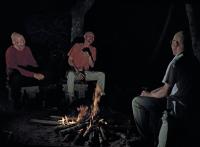 We asked an albino guy if he could tell any jokes about the Portuguese, he laughed and said, a Portuguese man arrived here in Maputo, couldn’t believe his eyes, and asked a smart and friendly looking native what they called motherfuckers in Mozambique. But sir, we don’t call them, they come from Lisbon of their own accord. And there we were, two motherfuckers in Maputo, 38 years after independence and 20 years after the civil war, the old drunk woman shouting, her eyes irradiating blood and misery, give me a mulatto, give me a mulatto or money, motherfucker.
We asked an albino guy if he could tell any jokes about the Portuguese, he laughed and said, a Portuguese man arrived here in Maputo, couldn’t believe his eyes, and asked a smart and friendly looking native what they called motherfuckers in Mozambique. But sir, we don’t call them, they come from Lisbon of their own accord. And there we were, two motherfuckers in Maputo, 38 years after independence and 20 years after the civil war, the old drunk woman shouting, her eyes irradiating blood and misery, give me a mulatto, give me a mulatto or money, motherfucker.
To read
24.04.2013 | by João Maria Gusmao + Pedro Paiva
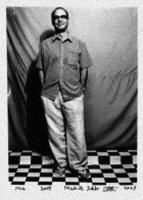 A particular cultural expression results from an expectation that a group has in relation to the culture and the world, but also in its hereditary burden, in what, in the English-speaking world, is well called heritage. Of course, because of tradition or expectation, many of these cultures and groups come into conflict. It may be productive, since it is assumed as a normal part of democracy. As there is negotiation between groups and cultural expressions, where the intervention in the city and political and social issues cannot be replaced by culture, we find ourselves in a rich and democratic situation. Cultural productions should translate that.
A particular cultural expression results from an expectation that a group has in relation to the culture and the world, but also in its hereditary burden, in what, in the English-speaking world, is well called heritage. Of course, because of tradition or expectation, many of these cultures and groups come into conflict. It may be productive, since it is assumed as a normal part of democracy. As there is negotiation between groups and cultural expressions, where the intervention in the city and political and social issues cannot be replaced by culture, we find ourselves in a rich and democratic situation. Cultural productions should translate that.
Face to face
06.10.2011 | by Marta Lança
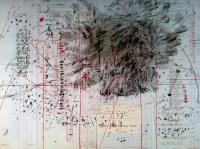 If any African artist working today can be described as internationally acclaimed, instantly recognizable, with a style marked by a unique personality, it is the South African William Kentridge. A ubiquitous presence in art festivals and exhibitions and in the permanent collections of the great museums, a recipient of numerous prizes, encomia, and honorary doctorates, Kentridge was born in Johannesburg in 1955, when popular uprisings and increasingly harsh repression drew clear lines between partisans and opponents of the racist authoritarian regime.
If any African artist working today can be described as internationally acclaimed, instantly recognizable, with a style marked by a unique personality, it is the South African William Kentridge. A ubiquitous presence in art festivals and exhibitions and in the permanent collections of the great museums, a recipient of numerous prizes, encomia, and honorary doctorates, Kentridge was born in Johannesburg in 1955, when popular uprisings and increasingly harsh repression drew clear lines between partisans and opponents of the racist authoritarian regime.
I'll visit
21.06.2011 | by Beatriz Leal Riesco
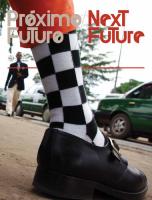 Since the 1960s, there has been great excitement in many African countries with the creation of art schools. Together with the first exhibitions of self-taught artists, there have also been the first festivals of black art, and even the work of African photographers has begun to establish a reputation for itself in Africa, in European countries and in some forums in the USA. The history of these artistic movements is already being written, describing their schools, their leading figures and their international impact.
Since the 1960s, there has been great excitement in many African countries with the creation of art schools. Together with the first exhibitions of self-taught artists, there have also been the first festivals of black art, and even the work of African photographers has begun to establish a reputation for itself in Africa, in European countries and in some forums in the USA. The history of these artistic movements is already being written, describing their schools, their leading figures and their international impact.
To read
11.05.2011 | by António Pinto Ribeiro
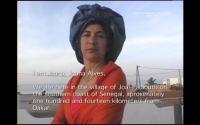 There is something transversal in Ângela Ferreira's video work, something that deals, fundamentally, with a kind of non-correlation between the concrete identity of the filmed places and its investment in open juxtapositions over a constellation of spacial axes and discontinuous temporalities. If territorial duality, inseparable from a certain biographical trajectory, from frequent journeys between Africa - Mozambique and South Africa - and Europe, undoubtedly marks Ângela Ferreira's work, it is precisely this territorial duality that has written history in the indeterminate space of video discourse, pointing to issues of geopolitics and exposing us, simultaneously, to the work of deconstruction of iconography and the colonial and postcolonial imaginary that is being systematically developed by the artist.
There is something transversal in Ângela Ferreira's video work, something that deals, fundamentally, with a kind of non-correlation between the concrete identity of the filmed places and its investment in open juxtapositions over a constellation of spacial axes and discontinuous temporalities. If territorial duality, inseparable from a certain biographical trajectory, from frequent journeys between Africa - Mozambique and South Africa - and Europe, undoubtedly marks Ângela Ferreira's work, it is precisely this territorial duality that has written history in the indeterminate space of video discourse, pointing to issues of geopolitics and exposing us, simultaneously, to the work of deconstruction of iconography and the colonial and postcolonial imaginary that is being systematically developed by the artist.
Afroscreen
13.09.2010 | by Raquel Schefer
 In the exhibition the sun does not rise in the north, de Miranda proposes one-person tales navigating between fictional and non-fictional narratives in the affective space of the border. The exhibition investigates the landscapes that witness hope, from the journeys of migration between Africa and Europe, set within a duality of existence and citizenship: one contemplating Europe and the other a return to Africa.
In the exhibition the sun does not rise in the north, de Miranda proposes one-person tales navigating between fictional and non-fictional narratives in the affective space of the border. The exhibition investigates the landscapes that witness hope, from the journeys of migration between Africa and Europe, set within a duality of existence and citizenship: one contemplating Europe and the other a return to Africa.  No history of decolonization or of decolonizing praxes is ever completed without attention to gender. How did women view the liberation struggles in the former Portuguese colonies? How were their ways of seeing integrated or not in the imagination of colonialism? Was there a specific gaze to women over the liberation struggles? What knowledge and awareness do we have of/about these ways of seeing? And how do these ways of seeing intersect with those of contemporary filmmakers, artists, curators and academics who are now questioning public and private archives, are visually recreating their memories or re-imagining colonialism? What role academic research, archive conservation policies, programming and curatorship have in questioning or prolonging (official) “politics of memory”?
No history of decolonization or of decolonizing praxes is ever completed without attention to gender. How did women view the liberation struggles in the former Portuguese colonies? How were their ways of seeing integrated or not in the imagination of colonialism? Was there a specific gaze to women over the liberation struggles? What knowledge and awareness do we have of/about these ways of seeing? And how do these ways of seeing intersect with those of contemporary filmmakers, artists, curators and academics who are now questioning public and private archives, are visually recreating their memories or re-imagining colonialism? What role academic research, archive conservation policies, programming and curatorship have in questioning or prolonging (official) “politics of memory”?  This essay investigates the ways in which contemporary artistic practices have been working towards an epistemic and ethico-political decolonization of the present by means of critical examinations of several sorts of colonial archives, whether public or private, familial or anonymous. Through the lens of specific artworks by the artists Ângela Ferreira, Kiluanji Kia Henda, Délio Jasse, Daniel Barroca and Raquel Schefer, this essay examines the extent to which the aesthetics of these video, photographic and sculptural practices puts forth a politics and ethics of history and memory relevant to thinking critically about the colonial amnesias and imperial nostalgias which still pervade a post-colonial condition marked by neo-colonial patterns of globalization and by uneasy relationships with diasporic and migrant communities.
This essay investigates the ways in which contemporary artistic practices have been working towards an epistemic and ethico-political decolonization of the present by means of critical examinations of several sorts of colonial archives, whether public or private, familial or anonymous. Through the lens of specific artworks by the artists Ângela Ferreira, Kiluanji Kia Henda, Délio Jasse, Daniel Barroca and Raquel Schefer, this essay examines the extent to which the aesthetics of these video, photographic and sculptural practices puts forth a politics and ethics of history and memory relevant to thinking critically about the colonial amnesias and imperial nostalgias which still pervade a post-colonial condition marked by neo-colonial patterns of globalization and by uneasy relationships with diasporic and migrant communities.  Yonamine has theatrically composed the gallery walls with posters made out of a selection of articles from Zimbabwean newspapers, paintings and video animations, showing several graphic references of power such as Napoleon figure and the Ku Kux Klan uniform presented in a navy blue adulterated version colour that evokes the uniforms of Zimbabwe's workers. All these elements are presented as political propaganda in the eve of an election, personifying the conqueror's evil thirst to reach power and control by keeping the opposition voiceless.
Yonamine has theatrically composed the gallery walls with posters made out of a selection of articles from Zimbabwean newspapers, paintings and video animations, showing several graphic references of power such as Napoleon figure and the Ku Kux Klan uniform presented in a navy blue adulterated version colour that evokes the uniforms of Zimbabwe's workers. All these elements are presented as political propaganda in the eve of an election, personifying the conqueror's evil thirst to reach power and control by keeping the opposition voiceless.  Miranda’s work is deeply marked by family memories and experiences and, more broadly, by the collective histories of Portugal and Angola. In Panorama, her focus on the psychic and physical remnants of several pasts – colonial, post-independence, post-Cold War, post-civil war – within natural, urban and architectural landscapes of Luanda and beyond serves the larger purpose of examining the contradictions of the present and imagining alternative futures.
Miranda’s work is deeply marked by family memories and experiences and, more broadly, by the collective histories of Portugal and Angola. In Panorama, her focus on the psychic and physical remnants of several pasts – colonial, post-independence, post-Cold War, post-civil war – within natural, urban and architectural landscapes of Luanda and beyond serves the larger purpose of examining the contradictions of the present and imagining alternative futures.  For other mediums such as sound art and video art to gain traction in Afrika, I think they need to be taken out of the gallery or museum environment and put into the mobile environment where people are. This entails modifying the model of collecting, where alternative commercial models better suited to mobile consumption of content come to the fore. The onus is on these new art platforms in Afrika to look deep within their cultures and societies and innovate the mediums themselves to make art more relevant for their communities.
For other mediums such as sound art and video art to gain traction in Afrika, I think they need to be taken out of the gallery or museum environment and put into the mobile environment where people are. This entails modifying the model of collecting, where alternative commercial models better suited to mobile consumption of content come to the fore. The onus is on these new art platforms in Afrika to look deep within their cultures and societies and innovate the mediums themselves to make art more relevant for their communities.  The current situation tells us in what way we should create empathy with the images of the world. Or how the images of the world are themselves empathy, understanding. An abstract economical system that obsessively copies the natural chaos.
Distribution, or relationship. The act of transaction and of eternal and permanent conflict.
The current situation tells us in what way we should create empathy with the images of the world. Or how the images of the world are themselves empathy, understanding. An abstract economical system that obsessively copies the natural chaos.
Distribution, or relationship. The act of transaction and of eternal and permanent conflict.  The solo exhibition ‘Monuments in Reverse’ gathers for the first time a set of works by Ângela Ferreira, made between 2008 and 2012, which emerged from the same research-based processes, giving rise, however, to disparate installations whose intimate relationships tend to remain unexplored from a curatorial perspective. With the aim of opening a space of visibility for the conceptual and formal interstices sustaining her practice in general and these works in particular, the exhibition is purposefully documentary and process-based. It intends to shed light on thinking processes more than points of arrival, through the possibility of new connections, or the visibility of previously occluded ones, the strong presence of drawing and video, and the dialogue with works by others which have constituted point of departure or inspiration.
The solo exhibition ‘Monuments in Reverse’ gathers for the first time a set of works by Ângela Ferreira, made between 2008 and 2012, which emerged from the same research-based processes, giving rise, however, to disparate installations whose intimate relationships tend to remain unexplored from a curatorial perspective. With the aim of opening a space of visibility for the conceptual and formal interstices sustaining her practice in general and these works in particular, the exhibition is purposefully documentary and process-based. It intends to shed light on thinking processes more than points of arrival, through the possibility of new connections, or the visibility of previously occluded ones, the strong presence of drawing and video, and the dialogue with works by others which have constituted point of departure or inspiration.  A City Called Mirage is a complex exhibition, by the Angolan artist KILUANJI KIA HENDA (Luanda, 1979), which explores original approaches to a recurring theme in recent times: that of cities between the states of virtuality and desertification. Kiluanji uses (science and mythological) fiction and irony as ways of transcending the pessimism of hyper-criticism and the aesthetics of the ruin. Through humour we are made aware of just how ephemeral the largest human constructions are: all cities will be reduced to raw materials again, just like the metals removed from the ground will once again merge back into it.
A City Called Mirage is a complex exhibition, by the Angolan artist KILUANJI KIA HENDA (Luanda, 1979), which explores original approaches to a recurring theme in recent times: that of cities between the states of virtuality and desertification. Kiluanji uses (science and mythological) fiction and irony as ways of transcending the pessimism of hyper-criticism and the aesthetics of the ruin. Through humour we are made aware of just how ephemeral the largest human constructions are: all cities will be reduced to raw materials again, just like the metals removed from the ground will once again merge back into it.  We asked an albino guy if he could tell any jokes about the Portuguese, he laughed and said, a Portuguese man arrived here in Maputo, couldn’t believe his eyes, and asked a smart and friendly looking native what they called motherfuckers in Mozambique. But sir, we don’t call them, they come from Lisbon of their own accord. And there we were, two motherfuckers in Maputo, 38 years after independence and 20 years after the civil war, the old drunk woman shouting, her eyes irradiating blood and misery, give me a mulatto, give me a mulatto or money, motherfucker.
We asked an albino guy if he could tell any jokes about the Portuguese, he laughed and said, a Portuguese man arrived here in Maputo, couldn’t believe his eyes, and asked a smart and friendly looking native what they called motherfuckers in Mozambique. But sir, we don’t call them, they come from Lisbon of their own accord. And there we were, two motherfuckers in Maputo, 38 years after independence and 20 years after the civil war, the old drunk woman shouting, her eyes irradiating blood and misery, give me a mulatto, give me a mulatto or money, motherfucker.  A particular cultural expression results from an expectation that a group has in relation to the culture and the world, but also in its hereditary burden, in what, in the English-speaking world, is well called heritage. Of course, because of tradition or expectation, many of these cultures and groups come into conflict. It may be productive, since it is assumed as a normal part of democracy. As there is negotiation between groups and cultural expressions, where the intervention in the city and political and social issues cannot be replaced by culture, we find ourselves in a rich and democratic situation. Cultural productions should translate that.
A particular cultural expression results from an expectation that a group has in relation to the culture and the world, but also in its hereditary burden, in what, in the English-speaking world, is well called heritage. Of course, because of tradition or expectation, many of these cultures and groups come into conflict. It may be productive, since it is assumed as a normal part of democracy. As there is negotiation between groups and cultural expressions, where the intervention in the city and political and social issues cannot be replaced by culture, we find ourselves in a rich and democratic situation. Cultural productions should translate that.  If any African artist working today can be described as internationally acclaimed, instantly recognizable, with a style marked by a unique personality, it is the South African William Kentridge. A ubiquitous presence in art festivals and exhibitions and in the permanent collections of the great museums, a recipient of numerous prizes, encomia, and honorary doctorates, Kentridge was born in Johannesburg in 1955, when popular uprisings and increasingly harsh repression drew clear lines between partisans and opponents of the racist authoritarian regime.
If any African artist working today can be described as internationally acclaimed, instantly recognizable, with a style marked by a unique personality, it is the South African William Kentridge. A ubiquitous presence in art festivals and exhibitions and in the permanent collections of the great museums, a recipient of numerous prizes, encomia, and honorary doctorates, Kentridge was born in Johannesburg in 1955, when popular uprisings and increasingly harsh repression drew clear lines between partisans and opponents of the racist authoritarian regime.  Since the 1960s, there has been great excitement in many African countries with the creation of art schools. Together with the first exhibitions of self-taught artists, there have also been the first festivals of black art, and even the work of African photographers has begun to establish a reputation for itself in Africa, in European countries and in some forums in the USA. The history of these artistic movements is already being written, describing their schools, their leading figures and their international impact.
Since the 1960s, there has been great excitement in many African countries with the creation of art schools. Together with the first exhibitions of self-taught artists, there have also been the first festivals of black art, and even the work of African photographers has begun to establish a reputation for itself in Africa, in European countries and in some forums in the USA. The history of these artistic movements is already being written, describing their schools, their leading figures and their international impact.  There is something transversal in Ângela Ferreira's video work, something that deals, fundamentally, with a kind of non-correlation between the concrete identity of the filmed places and its investment in open juxtapositions over a constellation of spacial axes and discontinuous temporalities. If territorial duality, inseparable from a certain biographical trajectory, from frequent journeys between Africa - Mozambique and South Africa - and Europe, undoubtedly marks Ângela Ferreira's work, it is precisely this territorial duality that has written history in the indeterminate space of video discourse, pointing to issues of geopolitics and exposing us, simultaneously, to the work of deconstruction of iconography and the colonial and postcolonial imaginary that is being systematically developed by the artist.
There is something transversal in Ângela Ferreira's video work, something that deals, fundamentally, with a kind of non-correlation between the concrete identity of the filmed places and its investment in open juxtapositions over a constellation of spacial axes and discontinuous temporalities. If territorial duality, inseparable from a certain biographical trajectory, from frequent journeys between Africa - Mozambique and South Africa - and Europe, undoubtedly marks Ângela Ferreira's work, it is precisely this territorial duality that has written history in the indeterminate space of video discourse, pointing to issues of geopolitics and exposing us, simultaneously, to the work of deconstruction of iconography and the colonial and postcolonial imaginary that is being systematically developed by the artist. 